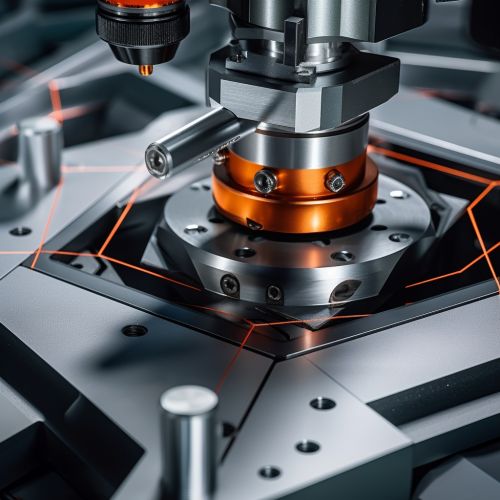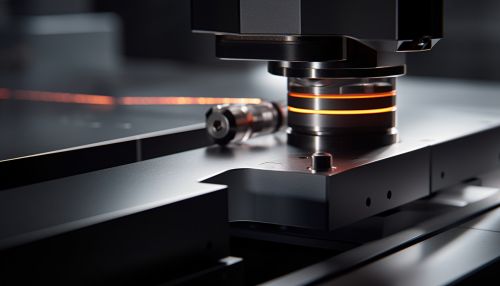Magnetic Force Microscopy
Introduction
Magnetic Force Microscopy (MFM) is a variant of Atomic Force Microscopy (AFM) that enables the measurement and visualization of magnetic forces at the nanometer scale. It was first introduced in 1987 and has since become an indispensable tool in the field of nanotechnology and material science, particularly in the study of magnetic materials.
Principle
The principle of MFM is based on the interaction between a magnetized tip and the magnetic forces present on the surface of a sample. The tip, which is usually made from a ferromagnetic material, is attached to a flexible cantilever. As the tip scans over the sample surface, the magnetic forces between the tip and the sample cause the cantilever to deflect. This deflection is measured and used to construct an image of the magnetic forces on the sample surface.
Instrumentation
The instrumentation of an MFM is similar to that of a standard AFM. The main components include a piezoelectric scanner, a laser, a photodetector, and a control system. The scanner moves the sample in the X, Y, and Z directions. The laser is focused on the back of the cantilever and the reflected beam is detected by the photodetector. The control system processes the signal from the photodetector and adjusts the position of the scanner to maintain a constant force between the tip and the sample.


MFM Modes
There are two main modes of operation in MFM: lift mode and constant height mode. In lift mode, the topography and magnetic measurements are performed in two separate scans. First, the topography is measured in contact or tapping mode. Then, the tip is lifted to a certain height and the magnetic forces are measured while the tip follows the topography obtained in the first scan. In constant height mode, the tip scans at a fixed height above the sample and the magnetic forces are measured directly. This mode is faster but less accurate than lift mode.
Applications
MFM has a wide range of applications in various fields. In material science, it is used to study the magnetic properties of materials at the nanoscale. In data storage, it is used to visualize and analyze the magnetic patterns on hard disk drives. In biology, it is used to study the magnetic properties of biological samples, such as magnetotactic bacteria and magnetic nanoparticles in cells.
Advantages and Limitations
One of the main advantages of MFM is its ability to measure magnetic forces at the nanoscale, which is not possible with other techniques. It also provides quantitative information about the magnetic properties of a sample. However, MFM also has some limitations. For example, it can only measure the magnetic forces on the surface of a sample, not inside the sample. It is also sensitive to external magnetic fields, which can affect the accuracy of the measurements.
Future Perspectives
With the continuous advancement in technology, MFM is expected to become even more powerful and versatile in the future. New types of tips and improved scanning techniques are being developed to increase the resolution and sensitivity of MFM. There is also ongoing research to combine MFM with other techniques, such as electron microscopy and spectroscopy, to obtain more comprehensive information about a sample.
